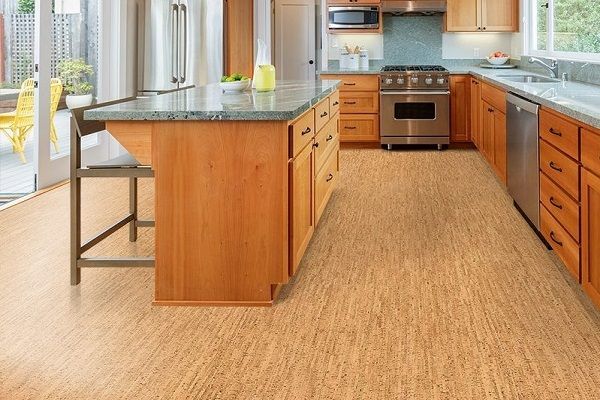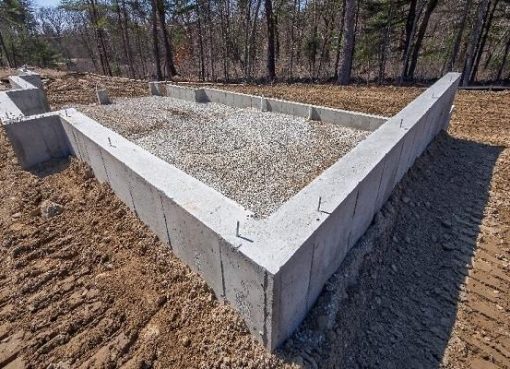The flooring in a home defines the overall aesthetic and functionality of the space.
When it comes to the flooring of your home, choosing the right type can be challenging. And not just because there are so many floors out there but also because the flooring sets the foundation for the rest of the home’s decor and can make or break the design of a room.

For modern homes, homeowners often opt for flooring that is easy to maintain and stylish. When appropriately selected, new floors can completely transform the look and feel of a home.
Let’s explore some of the most popular flooring options that work well in contemporary homes.
Hardwood Floors
Hardwood floors have been a timeless choice for homes for good reason. Wood floors add warmth and character to a space that is hard to replicate with other types of flooring. The natural variations in the wood grain give each plank a unique look.
Hardwood is very versatile and can complement modern, rustic, traditional, or eclectic home styles. Oak, maple, hickory, and exotic woods like Brazilian cherry are common choices.
While hardwood floors are a timeless choice, they can sometimes be prone to scratches and moisture retention. The good news is that today, many engineered hardwoods are available that are more scratch and moisture-resistant while retaining the beauty of natural wood.
However, if you’ve ever experienced mold issues, it’s wise to consult a mold remediation expert before deciding on the flooring type. Also, proper care and maintenance are always required, no matter what type of flooring you are choosing. Consider using area rugs in common areas to minimize wear and tear.
Tile Floors
Tile is an excellent choice for kitchens, bathrooms, laundry rooms, and entryways because it is water-resistant and easy to clean. The variety of colors, textures, shapes, and patterns available in tile today is vast, making it easy to find a look that aligns with your interior design style.
Tile comes in natural stones like marble, slate, and travertine, as well as ceramic and porcelain. Porcelain tile in large sizes can convincingly mimic the look of hardwood or concrete with added durability.
However, the grout lines in tile do require periodic sealing and scrubbing to keep them from staining. To help minimize maintenance, you can opt for darker grout colors when tiling. Also, tile floors feel harder underfoot than wood or vinyl flooring; using soft slippers in the house will take the strain out of your feet.
Luxury Vinyl Plank Flooring
Luxury vinyl plank (LVP) flooring is one of the popular flooring options. Its popularity has grown in recent years due to its realistic visuals and durability. Quality LVP replicates the look of hardwood, tile, and stone as great attention to detail is given to colors, grains, and textures. Combine this with a scratch and dent-resistant wear layer and waterproof construction, allowing use in wet areas, and it’s easy to see why LVP is trending. The planks click together for a DIY-friendly floating installation over a variety of subfloors.
LVP offers comfort underfoot and sound absorption, making it ideal for quieter rooms. Regular sweeping and damp mopping are all that’s needed to maintain the floors. However, a significant disadvantage is that LVP can dent from heavy point loads, such as appliance legs or furniture. Using proper floor protectors can mitigate this issue.
Bamboo Flooring
For homeowners who want a sustainable flooring option, bamboo is an excellent choice. Bamboo is a fast-growing grass that reaches maturity in 3-5 years, compared to decades for hardwood trees. There are two main types: horizontal and vertical grain.
Horizontal grain bamboo floor planks exhibit natural bamboo nodes and a linear grain pattern. In contrast, vertical-grain bamboo has a finer, more uniform grain pattern since the planks are oriented on their side.
Bamboo floors can closely resemble oak or maple hardwood but are more moisture-resistant. Their durability does vary based on manufacturing quality; higher-density bamboo performs better. Bamboo does scratch and scuff fairly easily, requiring the same care as hardwoods. Therefore, area rugs are recommended in high-traffic zones.
Concrete Flooring
Concrete flooring gives off an edgy, urban vibe that works well in modern homes. The industrial raw look of exposed concrete has become popular in warehouses converted to lofts as well as new construction.
Concrete can be stained, polished, etched, or stamped to create varied designs and textures. Durable and easy to clean, concrete adds a unique, monolithic aesthetic.
On the downside, the surface is hard and unforgiving to stand on for long periods. The installation is also labor-intensive and costly. Using higher R-value insulation under the slab and radiant floor heating systems can improve comfort. Plus, area rugs and anti-fatigue mats are a must for bedrooms and other spaces.
Cork Flooring
For eco-friendly homeowners, cork is a smart and sustainable flooring choice that comes from the bark of the cork oak tree. The bark is harvested without harming the tree, which continues to regenerate new bark. Cork has a rich, warm appearance that adds natural beauty to any room.
Cork is antimicrobial, mold and mildew resistant, sound and heat insulating, comfortable underfoot, and gentle on fragile items when dropped. It also helps absorb noise and impact for quieter, more relaxed spaces. There are glue-down cork tiles and planks, and floating floor options.
Cork does show scuffs and dents readily and requires sealing to prevent staining. Make sure to use area rugs in high-traffic zones and furniture pads under heavy furniture legs.
Laminate Flooring
Laminate flooring simulates the look of natural hardwood, stone, and tile through a decorative layer fused to a composite wood core. The top layer in laminated floors resists stains and fading.
Laminate is affordable, easy to install as a floating floor, and durable enough for any room. The range of wood, colors, and grain patterns available provides plenty of design options. Textured laminate can copy the style of tile and stone while avoiding the cold, rugged feel underfoot.
High-quality laminate floors are nearly indistinguishable from natural hardwood at a glance. The major downside, however, is that excessive moisture can damage the composite core, leading to planks swelling and warping. Therefore, laminate is not suitable for bathrooms or laundry rooms. If you’re using this flooring, use doormats to prevent tracking in water.
Finally
When choosing new floors for a modern home, there are many excellent options to consider that offer beauty, durability, and style. Hardwood remains a sought-after classic, while tile and stone look elegant and withstand heavy use. Waterproof surfaces like luxury vinyl and cork provide worry-free maintenance. There are also great sustainable choices like bamboo and concrete that make a unique design statement.
Taking the time to evaluate your home’s needs and interior design vision will ensure you select the ideal flooring to enhance your contemporary space for years to come. With a wide range of colors and patterns, you can find the perfect floors to complement your furnishings and finishes and give your home a fashionable foundation to build upon.
Source: engineeringcivil










